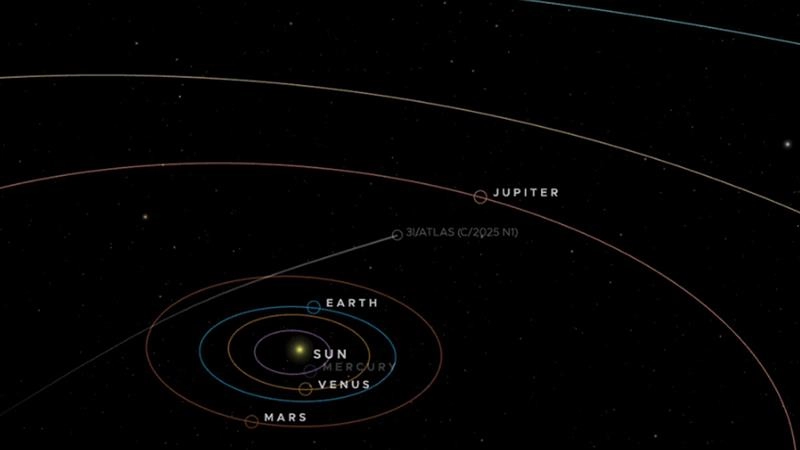Copyright latestly

Mumbai, October 28: With a new celestial visitor making headlines, space enthusiasts are abuzz with curiosity about Comet 3I/ATLAS, a mysterious object spotted hurtling through our solar system. Discovered by NASA’s ATLAS telescope in Chile, the comet has sparked wild theories online, some even speculating it could be an alien spacecraft due to its unusual orbit and speed. Videos, graphics, and space community discussions have flooded social media, amplifying intrigue about this rare interstellar traveller. Astronomers, however, are closely studying the object’s behaviour and trajectory as it moves closer to the Sun. The comet, first detected earlier this year, has already captured the attention of NASA and major observatories worldwide. While its approach near October 30 has triggered global curiosity and a fair share of doomsday rumours, scientists continue to gather precise data on its path. Scroll below to know what Comet 3I/ATLAS really is and whether it poses any threat to Earth. Does Earth Have a Second Moon? Meet ‘Quasi-Moon’ Asteroid 2025 PN7, Earth’s Temporary Cosmic Companion. What Is Comet 3I/ATLAS Interstellar Comet? Is It an Alien Ship? According to NASA, Comet 3I/ATLAS is the third known interstellar object detected passing through our solar system, following the discoveries of Oumuamua and 2I/Borisov. It was first spotted by NASA’s ATLAS telescope in Chile on July 1, 2025, and is believed to have originated from outside our solar system due to its hyperbolic orbital path, which doesn’t loop around the Sun. This unique trajectory confirms that it’s not gravitationally bound to our star, meaning it’s just passing through before heading back into deep space. Despite online speculation suggesting it could be an alien spacecraft, NASA and astronomers have clarified that 3I/ATLAS shows no artificial characteristics, only those typical of a natural comet, a mix of ice, rock, and dust. 3I/ATLAS: Should We Panic About the New Interstellar Comet? Scientists have observed a teardrop-shaped cocoon of dust surrounding its icy core, confirming natural outgassing as it warms near the Sun. The Hubble Space Telescope and other NASA missions are monitoring the comet to better estimate its size, believed to be between 440 meters and 5.6 kilometres across. Its discovery has provided a rare opportunity to study interstellar material up close, helping researchers understand how comets form in other star systems. In short, while 3I/ATLAS is an extraordinary cosmic visitor, there’s no evidence to suggest it’s anything other than a natural object, not an alien ship. Will 3I/ATLAS Interstellar Comet Hit Earth on October 30? No, Comet 3I/ATLAS poses no threat to Earth. NASA confirmed that the comet will remain far from our planet, reaching its closest point to the Sun around October 30, 2025, at about 1.4 astronomical units, roughly 130 million miles (210 million km) away, just inside Mars’ orbit. Its nearest approach to Earth will be about 1.8 AU (170 million miles), keeping it safely distant. While it may not be visible to the naked eye, telescopes will capture its passage, a spectacular but harmless cosmic event. NASA scientists expect the comet to stay visible to ground-based telescopes through September 2025 before moving too close to the Sun for observation. It will reappear on the opposite side by early December 2025, offering astronomers another opportunity to study its unique interstellar properties.



